This Saturday LA3WUA and LB0VG had an outing to Vassfjellet. The goal was to re-establish the radio link, which we have touched upon in a previous post, and investigate how the cabin and equipment had fared over winter.
The former was solved by a little application of the holy trinity – rebooting, resetting and finally re-configuring. The Ubiquity node we use for the radio link had suffered from a mysterious reset, and was somewhat unresponsive in our attempts to restore the original settings. The link is up and running, but the hardware hiccups are worrying. We will look into replacing/fixing this over the summer.
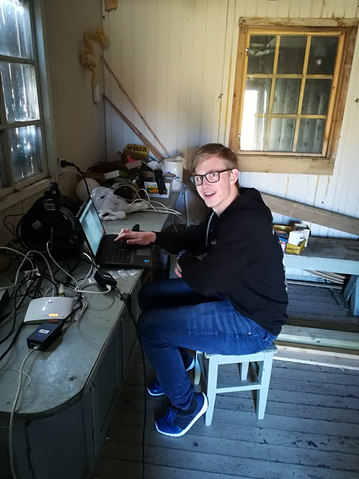
LB0VG, Kristoffer, working on reprogramming the Ubiquity radio link.
As seen in the feature image, the latter did not go particularly well. At Vassfjellet we have recurring problems with ice fall from the huge telecom mast next door. Two years ago we installed a sheet metal roof, which we hoped would stop the ice from piercing large holes in the roof. While the roof is rather battered after this winter, it is still intact.
- The ice fall culprit is a 200 m tall telecom mast approximately 30 m away from our cabin.
- LA3WUA disassembling a 6 m big wheel antenna. Note the dents in the metal roof of the cabin.
Unfortunately the same cannot be said for the stack of big wheel antennas that we installed last year. Harsh winds and ice have brought down all three antennas. The combination of large surface area, which makes a good ice target, and thin/brittle aluminium makes the big wheel uniquely unsuitable for installation at Vassfjellet. Nearly all curved outer parts of the big wheels has suffered fatigue fractures at the points where it attaches to the square booms.
- Before winter.
- After winter.
At the time of breakage, both LA2VHF/4 and LA2UHF were connected to big wheel antennas. This poses a serious issue, as both beacons were exposed to infinity SWR for a long time. With infinity SWR, the final amplifier gets power continuously reflected back at itself. If this reflected power is beyond the rating of the final transistor, it could potentially break…
We quickly got LA2UHF back up using the old indoor yagi antenna, but LA2VHF/4 is another story. After confirming that it could not be heard by other amateurs in the area, we decided to dismantle it, and bring it to the lab. As a result LA2VHF/4 is temporarily QRT.
- Another victim: the MarineTraffic vertical antenna seems to have been broken by wind.
- A collection of antenna scrap metal that we had to bring down from Vassfjellet.
Our suspicions were confirmed in the lab: LA2VHF/4’s final amplifier is blown. Fortunately it seems that only the RA30H0608M power module has taken damage. The voltages around the amplifier board checks out, and there is no indication of damage on any other components. The CW beacon board has also fared well, possibly due to the in-line attenuator (blue device in the first picture below) between it and the power amplifier.
- A view of the internals of LA2VHF/4.
- Closeup of LA2VHF/4’s power amplifier. The RA30H0608M module is broken and needs replacing.
Winter always seems to treat us well, keeping us entertained with exciting maintenance projects to complete over the summer. We have ordered spare parts, and hope to have LA2VHF/4 up and running as soon as they arrive. We will be back with an update once the beacon is back in service.
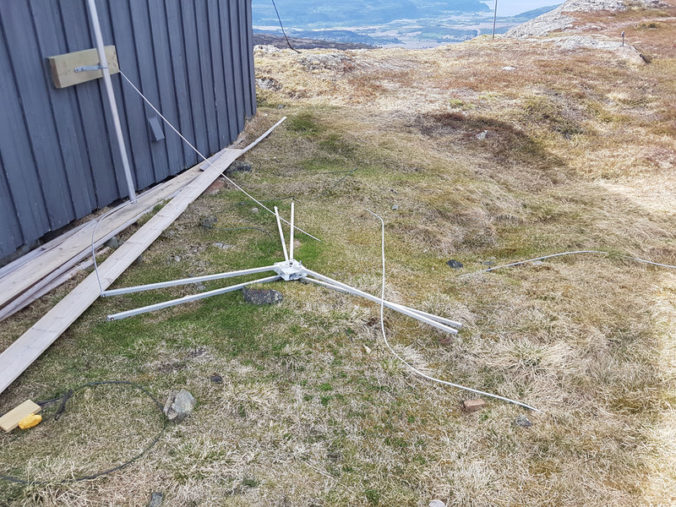
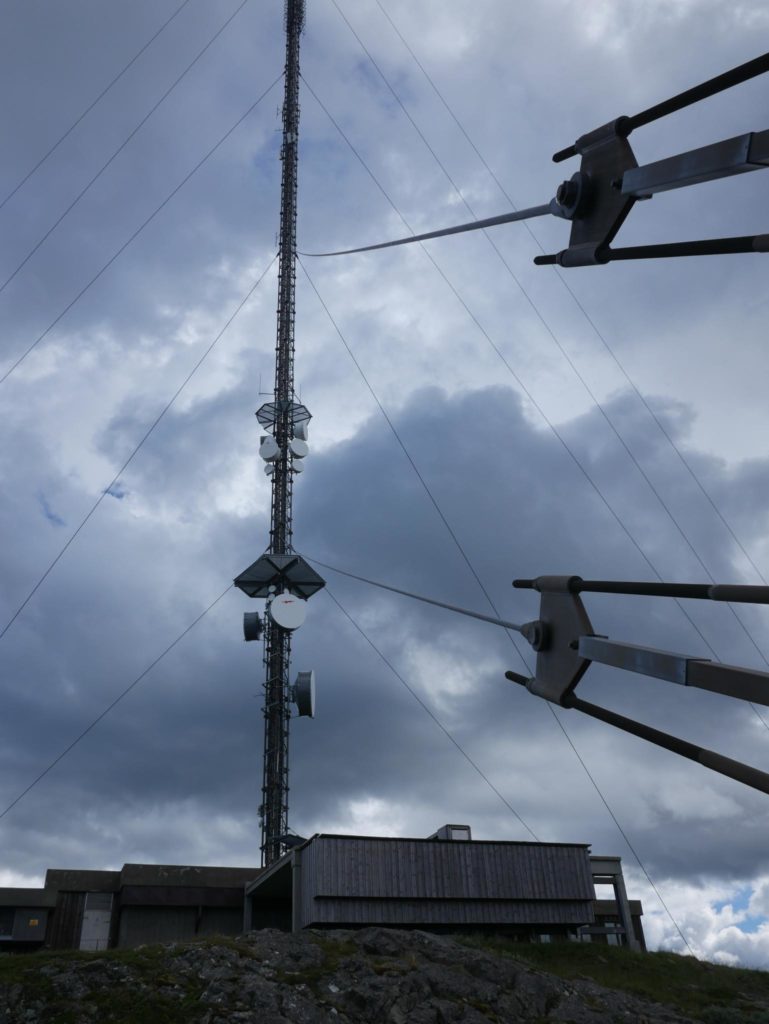
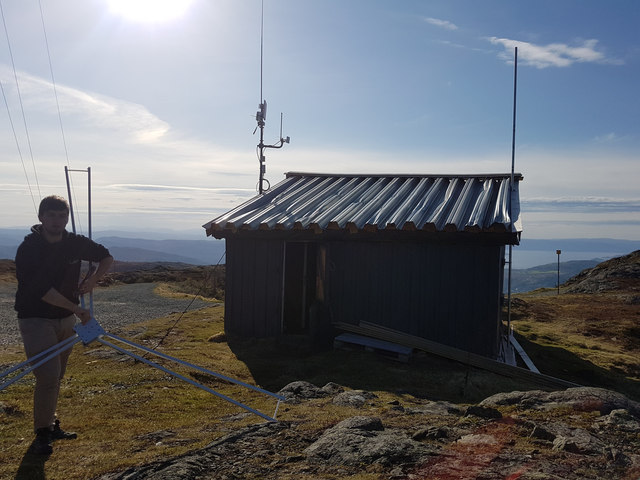
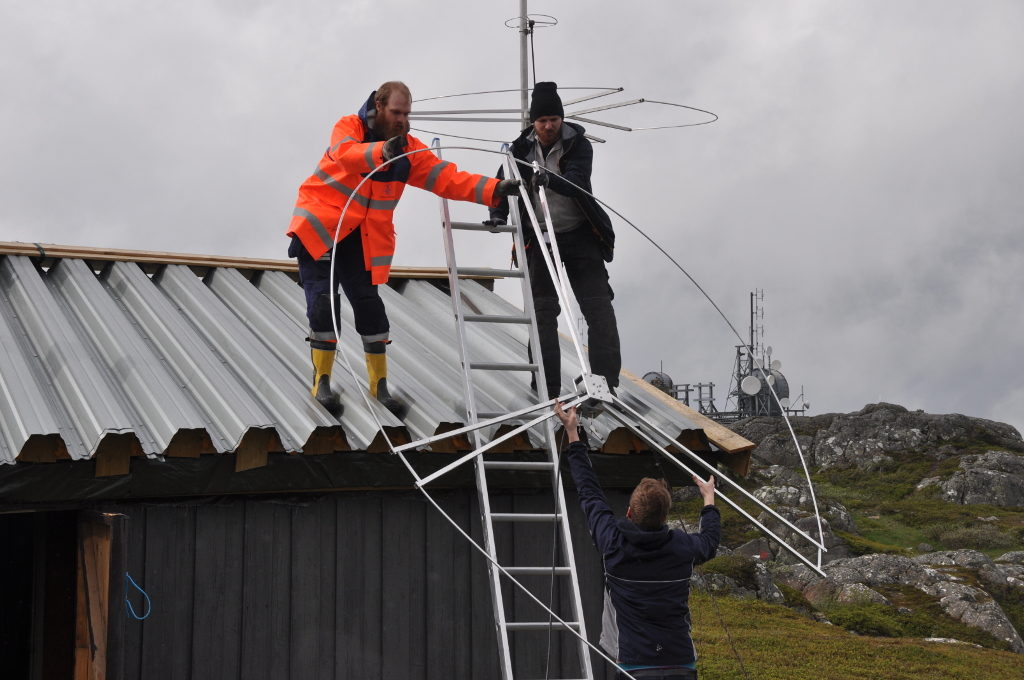
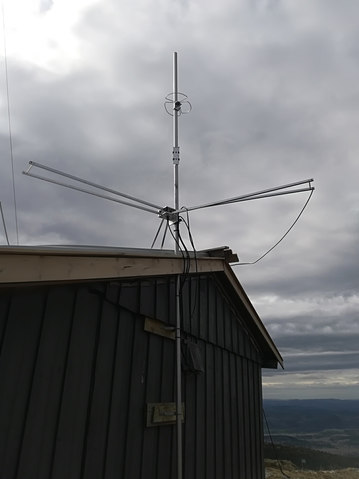
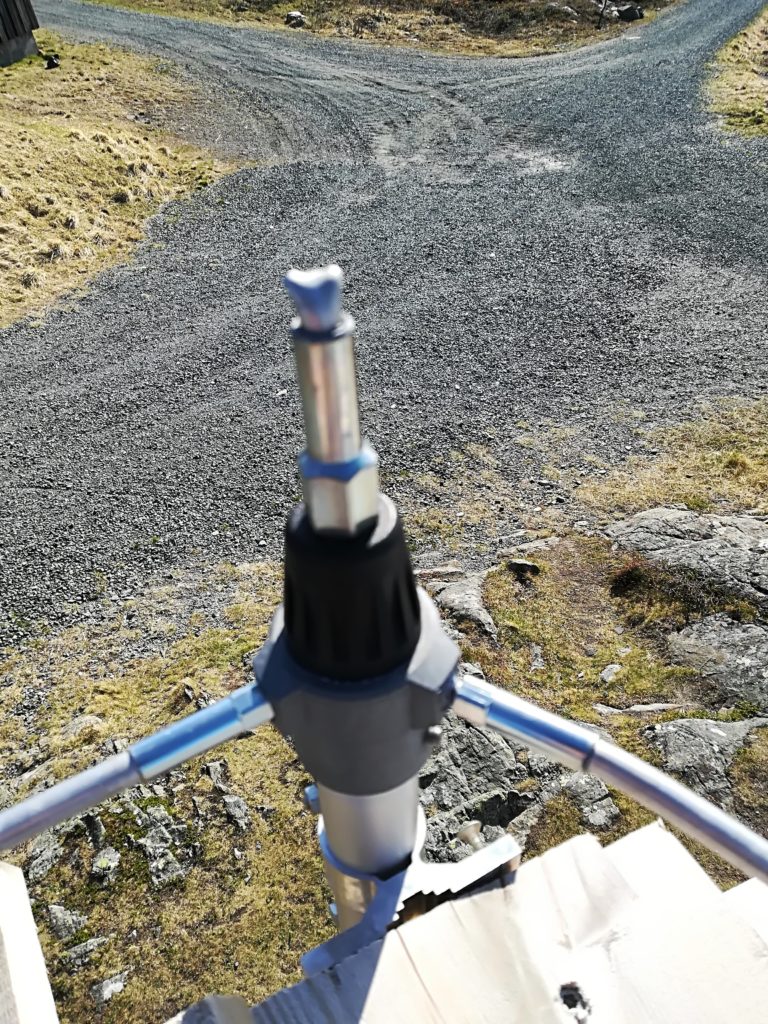
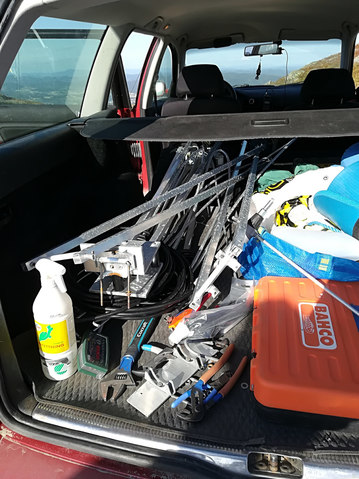
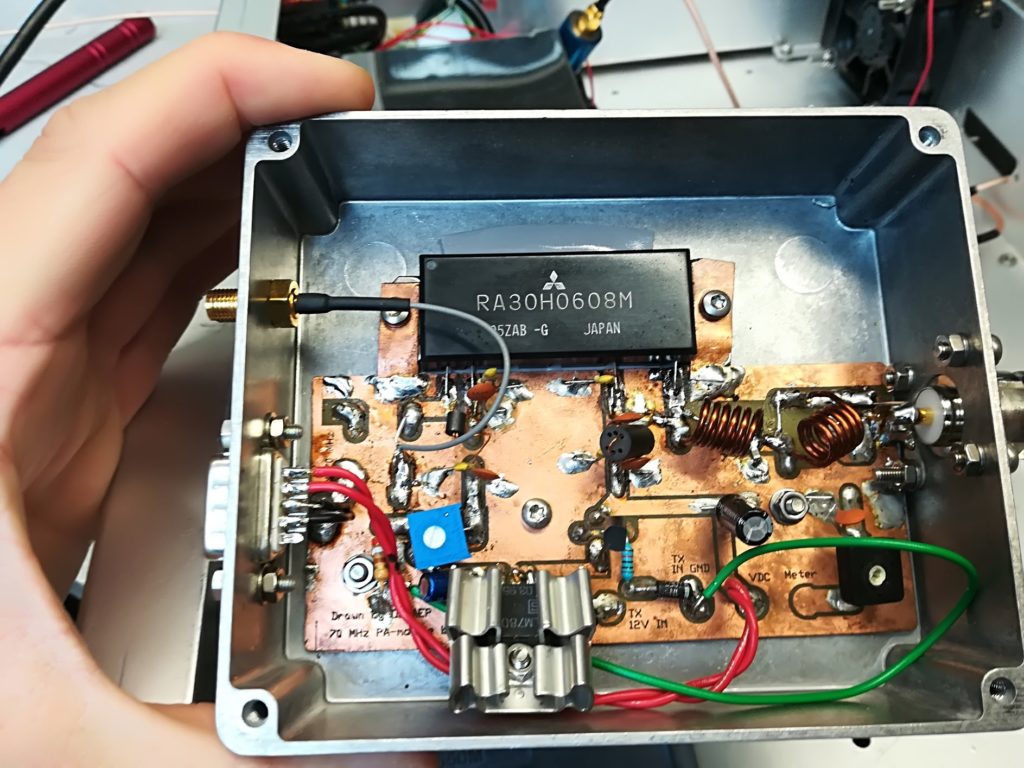

0 Comments
2 Pingbacks